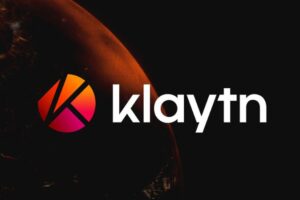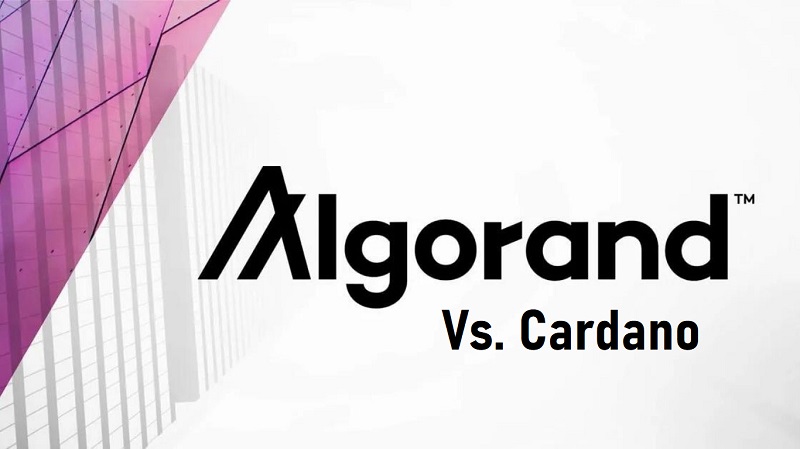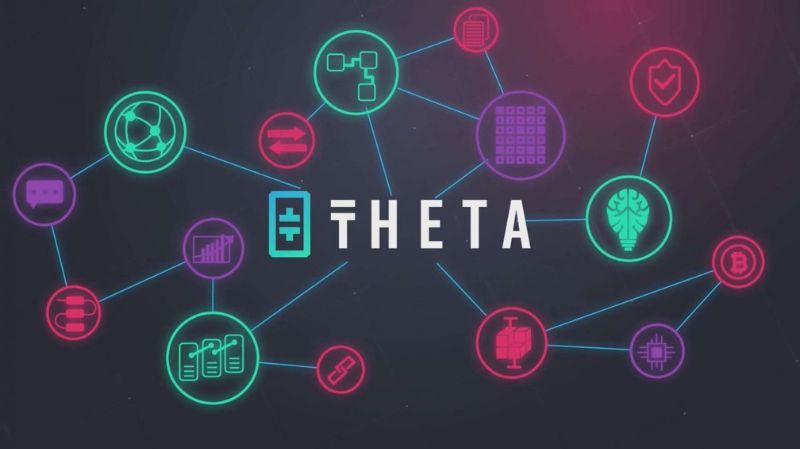Blockchain technology, like all technologies, is evolving. Bitcoin drew the world’s attention to the blockchain, and since then, more efforts have been made to build a successful decentralized network. The first such effort would be Ethereum, but solving the scalability problem has proven to be a difficult task for Ethereum. Algorand and Cardano, like some other blockchains, are focused on addressing scalability while also addressing security and decentralization.
Response time, limitations, block size, and high fees are the four major scalability issues facing the blockchain. These issues should have been resolved as the network evolved; however, because the Ethereum blockchain is still working on addressing all of these issues, Algorand and Cardano have decided to step up to the plate. However, the question of which blockchain is superior and which has resolved the issue of scalability remains.
Page Contents
Let’s know about Algorand
The Algorand platform was started in June 2019 to address the issue of “blockchain trilemma.” Vitalik Butter coined the term, which implies that a blockchain platform cannot have it all: decentralization, scalability, and security. In other words, Butterin is implying that a blockchain platform would have to sacrifice one for the sake of the others. For example, when developing a decentralized platform, it may be unavoidable to introduce flaws in its security and scalability. The Algorand platform was created in response to the blockchain trilemma. Using its Pure Proof-of-Stake protocol, the project was founded to promote a decentralized digital economy based on open and permissionless access. Using its transaction management system, Algorand intends to scale custom blockchain projects.
Silvio Micali, an MIT professor and recipient of the Turing Award, also known as the Nobel Prize in computing, founded Algorand. Rather than basing its philosophy on proof of work, the mining-based algorithm used by Bitcoin, the Algorand blockchain relies on democratic user participation. Pure-Proof-of-Stake is an upgraded version of Proof-of-Stake introduced by Algorand.
Let’s know about Cardano
Cardano was launched on September 29, 2017, by Charles Hoskinson, the CEO, and co-founder of Ethereum. After leaving Ethereum, Hoskinson founded IOHK (Input Output Hong Kong) and later developed Cardano. Cardano, while similar to Ethereum in terms of smart contract features, promises to address the issue of scalability. Cardano does not use the Proof-of-Work algorithm like Bitcoin. Because Cardano employs Ouroboros, a novel Proof-of-Stake algorithm, there are no miners on the Cardano blockchain to validate transactions.
Major Differences between Algorand and Cardano
License
Algorand is an open-source Blockchain protocol with a public repository that anyone can audit, use, and build on. While Cardano is also an open-source Blockchain protocol managed by the Cardano Blockchain, the Cardano Foundation is a Swiss non-profit organization.
Consensus Mechanism
Algorand technique enables the Pure Proof of Stake consensus mechanism to enable two types of nodes to optimize for transaction throughput and decentralization at the same time – relay nodes and participation nodes. The distinction between these two nodes is one of configuration rather than software. In contrast to other Proof-of-Work (PoW) protocols, attendees in Algorand do not need to solve cryptographic puzzles to propose or validate blocks.
To achieve consensus, Cardano employs the Ouroboros mechanism, in which each entity has the opportunity to be elected as a slot leader to validate a block. The possibility of becoming a slot leader in this system increases proportionally to the quantity of ADA set in their pool up to the pool saturation point. Stake pools earn a bonus in the event of successful validation, and additional rewards are distributed to stake pool delegates, providing an opportunity to earn ADA for participating in consensus.
Security and speed
Algorand’s speed is quite good, as an Algo can be sent in under 4.5 seconds, and your payment receives almost instant confirmation once made.
Algorand maintains strict security at both the consensus protocol and network levels, as security is critical in the Public Blockchain network. The security of Algorand is aimed at preventing powerful adversaries from perverting enough users to control block generation. . During a network partition in Algorand, the adversary is never able to persuade two genuine users to accept 2 distinct blocks for the same round, preserving security.
Capabilities of smart contracts
Smart Contracts (ASC1) in Algorand are classified into two types: stateful and stateless. Both kinds of Smart Contracts are written in Transaction Execution Approval Language (TEAL), an assembly-like language that can be perceived by the Algorand Virtual Machine (AVM) running within an Algorand node. These TEAL programs can be written with the help of PyTEAL in Python or even by hand.
Cardano works similarly to Ethereum, where the Blockchain model is combined with Smart Contracts and tokens. Cardano is comprised of two layers: the Cardano Settlement Layer (CSL) and the Cardano Computational Layer (CCL) (CCL). The CSL allows Cardano’s native cryptocurrency (ADA) to be transferred between Blockchain participants. The CCL, on the other hand, is made up of several components that enable tokenization and dApps.
Indigenous token
The native token in Algorand is known as Algo, and it contains all of the key features of the Algorand Blockchain. The Algorand Foundation approved token grants to early backers and universities to help rebase a secure and flexible initial infrastructure backbone. Algo has currently launched over 4 million NFTs in the cryptocurrency world, which roughly translates into 95,000 SIAE members’ rights.
‘Ada’ is Cardano’s native currency, named after Ada Lovelace, a 19th-century countess and English mathematician widely regarded as the first computer programmer.
Funding and community support
Algorand is a community member who helps support groups on social media, groups, and forums where Algorand projects are discussed. The community is rapidly expanding, as the Algorand Foundation has announced a grant of $200,000 for successful startups.
Cardano’s initial funding was done through an Initial Coin Offering (ICO), which has so far brought up $540000. Cardano has a community support forum where people can interact and have an open discussion about the Cardano project. There are also community pages on various social media platforms such as Facebook, Twitter, Reddit, GitHub, and Telegram groups.
Algorithm of Consensus
At their core, both Cardano and Algorand use the PoS or Proof of Stake consensus mechanism, but that’s where the similarities end. Each one has its unique spin on it.
A person can validate a block using the PoS mechanism based on how many stakes or coins he has. The stake amount determines how much mining power one has. So, how do they differ from one another?
Algorand
The consensus mechanism used by Algorand is known as PPoS (Pure Proof of Stake).
- PPoS chooses a token holder at random to be a block producer.
- The proposed block is approved by a committee of 1000 token owners picked at random and then added to the blockchain.
- The algorithm conducts a cryptographically provable lucky draw across all accounts to pick committee members and the block proposer at random.
- This means that the participants’ identities are unknown until the blocks are added to the chain.
This lottery process is carried out by PPoS in complete isolation from other nodes in the network. The completely randomized election and secret identities of the committee members greatly reduce the possibility of foul play within the network. The network becomes greater and more secure as the number of users increases.
To address the wealth disparity that exists in traditional PoS, Algorand’s PPoS has adopted a more inclusive ecosystem.
Cardano
Cardano’s version is known as Ouroboros PoS.
Cardano enables stakeholders to pool their resources in a single ‘stake pool,’ effectively deferring their stakes to the pool. This is because not every elected stakeholder has the expertise to create blocks.
- The physical timeline is divided into epochs, which are made up of fixed slots. These eras are cyclical, and each one is made up of a set of stakeholders.
- While endorsers are selected based on the weight of their stakes, a slot leader is chosen at random by a digital coin toss among stakeholders. When slot leaders’ blocks are approved by endorsers, they are added to the blockchain. The slot leader also chooses the slot leader for the next epoch via a coin toss.
- Keep in mind that having a higher stake increases your chances of being elected. Presently, the list of validators is fixed, and the sequence is known in advance.
Cardano intends to address the aforementioned issue with the launch of the Shelley manner. However, this will be a difficult fork. Staking will be used to select block validators by the community.
Scalability Management
Every lottery in Algorand lasts only a microsecond. Numerous lotteries can run concurrently because they operate freely from one another. Hence, PPoS is innately highly scalable. The mainnet itself is capable of handling 1000 TPS.
Cardano currently provides 50–250 TPS. However, by integrating sharding technology in its Ouroboros Hydra version, scalability can theoretically be increased to one million TPS. As more users or nodes join the network, the processing speed varies.
Conclusion
Man is progressing daily as a result of today’s modern technology. Everything and every task are completed faster, saving time, thanks to today’s extensive versions of technologies. The Algorand and Cardano were two such technologies. Even though they both fall under the umbrella of IT, the Algorand and Cardano have distinct changes.
Cardano and Algorand both have solid technology and teams that believe in thorough research and perfectly crafted products. Despite its early start, there is no denying that Cardano has established itself in a superior position due to technological achievement, consistency, and transparency.
However, as Algorand’s ecosystem expands rapidly, competition has increased. Algorand’s goal of bringing full transparency, technological innovation, and successful partnerships within a year has positioned it as a key competitor to Cardano.
A person interested in pursuing a career in information technology should understand the distinctions between Algorand and Cardano. Both of these technologies differ in how they perform their functions, how they possess their characteristics, and so on.











